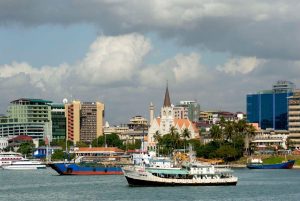Registration of new aircraft owned by wealthy Kenyans and private aviation firms nearly doubled last year in a mark of growing affluence that has been driving up demand for air travel.
The Kenya Civil Aviation Authority (KCAA) registered 87 new aircraft last year, up from 48 fresh listings in 2018, pushing the number of planes in the country to 1,548, excluding those owned by the National Police Service and the Kenya Defence Forces.
The 1,548 aircraft comprise those belonging to operators of scheduled and charter flights and privately-owned planes that operate from small airports and airstrips.
Kenya’s business magnates, politicians and new millionaires are fast taking to the skies as the preferred mode of transport – expanding the market for leasing and private ownership of planes.
Apart from urban-based business leaders, politicians and wealthy deal-makers, Kenyan skies are also dominated by large-scale farmers and ranchers based in Nanyuki, Kitale, Laikipia and Narok.
The farmers mostly use their small aircraft to spray their crops.
“There is a spike which we can only attribute to increased demand for these equipment, which for us is good progress in the aviation sector,” KCAA Director-General Gilbert Kibe told the Business Daily in an interview Wednesday.
“These are mainly helicopters and small aircraft owned by individuals and low-cost local carriers since we do not register military and police airplanes.’’
Aero Club of East Africa – a lobby group of private aircraft owners – attributed the growth in the number of registered planes to Nairobi’s rising status as the region’s business hub and a growing number of wealthy individuals with the means to own and maintain an aircraft.
About 356 billionaires were living in Kenya in 2018, according to the Africa Wealth 2019 report published by Mauritius-based AfrAsia Bank, placing the country at number four in a ranking of top African cities based on super-wealthy persons.
The wealth report ranked South Africa top with 2,169 billionaires, Egypt (932) and Nigeria (531). These individuals have net assets above $10 million (Sh1 billion).
Nairobi accounted for 73 percent of Kenya’s billionaires, reflecting the capital city’s economic dominance over the other 46 devolved units created in 2013 to address the wealth imbalance. The heavy concentration of billionaires in Nairobi indicates inequality in the country’s economic development, which has partly been attributed to the previous centralised system of government that guided sharing of resources since independence.
When the devolved system of government was introduced in 2013, it raised hopes of addressing the economic imbalance, but analysts say there is a need to offer incentives to attract private investors to counties.
Besides convenience, wealthy individuals have also acquired aircraft to satisfy their ambitions for reliable and personalised travel.
Air operators say that the biggest headache in owing an aircraft lies in operational and maintenance costs, including high jet fuel prices, airport landing fees, parking fees, insurance and spare parts.
Wilson Airport in Nairobi handles about 90 percent of domestic flights that mainly comprise chartered and commercial flights to holiday destinations such as Maasai Mara, Game Reserve, Mombasa, Amboseli National Park, Lamu, Kilimanjaro, Diani, Lokichogio and Nanyuki. It is currently ranked among the busiest airports in terms of aircraft movement in East and Central Africa.
Last year, 15 aircraft parked at Wilson Airport were placed on auction after their owners abandoned them at the facility, which had already started experiencing space constraints forcing the Kenya Airports Authority (KAA) to declare them a safety risk.
In a notice to the owners, KAA gave them 30 days to remove the different aircraft models, including those used for commercial passenger services.
The planes comprised smaller models like the HS 748, a medium-sized turboprop airliner and Beechcraft Baron (BE200 and BE90 belonging Canadian Operator Knight Aviation mainly used for chartered flights by the rich going for holidays and short trips within the country.
The cost of running the aircraft are increasing with the regulations requiring that they be parked at gazetted points like Wilson Airport, which adds to the ownership bill.
Growth in the number of registered aircraft has also offered job openings for pilots, cabin crew and engineers. Several companies running charter flight services have recently moved to boost their fleet capacity to match growing demand on both domestic and international routes.
Kenya’s higher share of billionaires as well as the opulence reflected in the purchase of planes is not in tandem with the relatively hard economic times the country has experienced in the past three years and the resulting fall in corporate profits that has seen thousands of people lose their jobs.
Over the three years, Kenya has elevated political uncertainties following a bruising presidential election in 2017 that put on hold many investment decisions. This was compounded by poor weather that has held back farming — which accounts for a third of the country’s gross domestic product (GDP).
The Kenyan economy expanded by 6.3 percent last year compared to 4.9 percent in 2017 but the drought is forecast to cut it to 5.7 percent last year.
AfrAsia Bank reckons the significant share of Kenya’s super-wealthy has attracted dealers in luxury brands including car dealers, hotels and fashion products.
Our Source: https://kenyantribune.com/the-rich-crowd-skies-as-aircraft-numbers-double/



